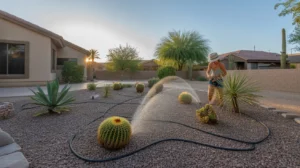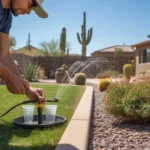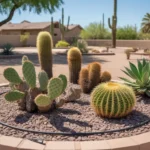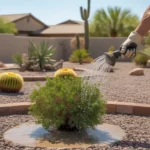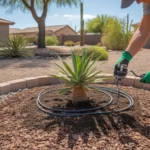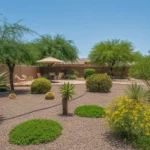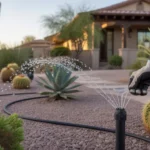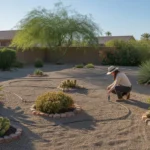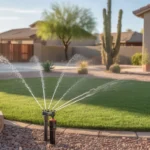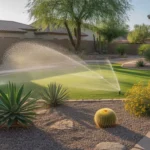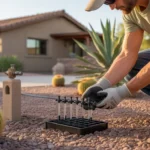As Chandler temperatures soar into the triple digits, keeping your yard hydrated becomes a top priority. But did you know that the timing of your watering can make a big difference in how well your plants withstand the heat? One simple change—moving your irrigation to the evening hours—can help your landscape thrive even on the hottest days. Welcome to the world of sunset soaking, the best time to water during a heat wave.
Why Evening Watering Wins in Extreme Heat
While early morning is generally considered the ideal time to water, that wisdom shifts when temperatures spike above 100°F for days on end. During a heat wave, switching your irrigation to the evening hours—ideally just before or after sunset—offers several key advantages for your Chandler yard:
First, evening watering gives your plants a chance to rehydrate overnight, when evaporation rates are lower. This is especially crucial for shallow-rooted plants like annuals and vegetables, which can quickly wilt in intense daytime heat. By soaking the soil at sunset, you’re ensuring that more moisture reaches the roots, rather than evaporating in the harsh sun.
Second, sunset soaking helps cool the soil and foliage, providing much-needed relief after a day of baking heat. This temperature reduction can minimize heat stress on your plants, helping them recover and reducing the risk of sunscald or leaf burn. Think of it as a refreshing evening shower for your yard.
Adjusting Your Irrigation Schedule for Heat Waves
To implement sunset soaking in your Chandler yard, you’ll need to adjust your irrigation controller’s schedule. Here’s a step-by-step guide:
- Identify the hottest period: Keep an eye on the forecast and note any upcoming stretches of extreme heat (highs over 100°F for 3+ days).
- Reprogram your controller: For the duration of the heat wave, shift your watering times to the evening hours, ideally between 6pm-10pm. Aim to finish before 11pm to allow foliage to dry overnight, reducing fungal risks.
- Increase frequency, not duration: Rather than running longer cycles, add an extra watering day to your schedule. This helps replenish soil moisture without overwatering. For example, if you normally water twice a week, bump it up to three times during extreme heat.
- Monitor and adjust: Keep an eye on your plants and soil moisture levels. If you see signs of stress or overly dry soil, you may need to further increase frequency or run an extra cycle on the hottest days.
Remember, these adjustments are temporary—once the heat wave passes, you can return to your regular morning watering schedule. But by implementing sunset soaking during the hottest periods, you’ll help your yard weather the extremes with greater resilience.
Maximizing the Benefits of Evening Watering
To get the most out of your sunset soaking strategy, pair it with these water-wise practices:
- Mulch heavily: A thick layer of organic mulch (3-4 inches) helps retain soil moisture, regulate temperature, and reduce evaporation. Reapply mulch as needed to maintain coverage.
- Prioritize efficient irrigation: If you haven’t already, consider upgrading to Smart Irrigation Upgrades Every Gilbert Yard Needs. Drip systems, smart controllers, and high-efficiency nozzles can all help maximize the effectiveness of your evening watering.
- Provide shade where possible: Shade cloth, umbrellas, or strategically placed trees can offer respite for heat-sensitive plants. See our guide on Prepping for Triple Digits: Mulch & Shade for more tips.
- Avoid overhead watering: Whenever possible, water at the soil level rather than from above. This minimizes evaporation and prevents wet foliage overnight, which can invite fungal issues. If you must use overhead sprinklers, aim to finish by early evening so leaves can dry before nightfall.
By combining sunset soaking with these water-smart strategies, you’ll give your Chandler yard the best chance of thriving through even the most intense heat waves.
Troubleshooting Evening Watering Issues
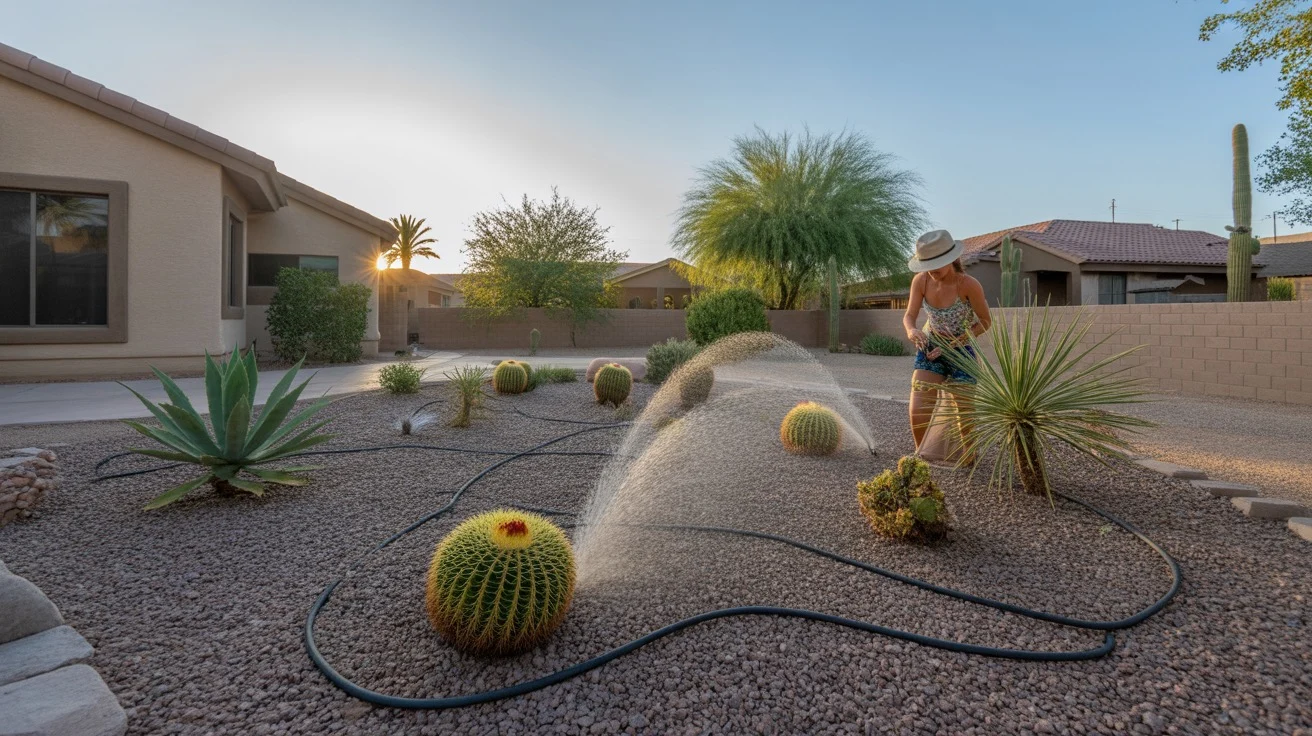
While sunset soaking can be a landscape-saver during extreme heat, there are a few potential pitfalls to watch out for. Here’s how to troubleshoot common issues:

Fungal Growth or Disease
Wet foliage overnight can sometimes lead to fungal problems, especially if you’re using overhead sprinklers. To minimize this risk:
- Use drip irrigation or soaker hoses to keep foliage dry
- If using sprinklers, adjust heads to avoid directly spraying leaves
- Finish watering by 8-9pm so foliage has time to dry before cooler nighttime temps set in
- Prune or stake plants to improve air circulation and prevent leaves from sitting in wet soil
Overwatering or Waterlogged Soil
Evening watering means less evaporation, so it’s easier to accidentally overwater, especially in heavy clay soils. To prevent this:
- Check soil moisture before watering—if it’s still damp 1-2 inches down, skip the extra cycle
- Reduce cycle times if you notice pooling or runoff
- Improve drainage by aerating lawns and amending beds with compost
- Consider switching to a Pro Tips on Drip Irrigation for more targeted watering
Pest Problems
Some pests, like slugs and snails, are more active at night and love damp conditions. If you notice an uptick in pest activity with evening watering:
- Remove any hiding spots like leaf litter, old boards, etc.
- Hand-pick pests in the evening and drop in soapy water
- Use organic bait like iron phosphate to control larger infestations
- Encourage natural predators like birds, toads, and beneficial insects
By staying alert for these issues and taking proactive steps, you can reap the benefits of sunset soaking without compromising your yard’s health.
The Beauty of a Sunset-Soaked Yard
There’s something undeniably magical about a yard that’s been freshly quenched by an evening watering. As the sun dips below the horizon and the day’s heat begins to dissipate, your plants seem to exhale a sigh of relief. Leaves perk up, flowers gleam with droplets, and the air is filled with the earthy aroma of moistened soil. It’s a daily reminder of the resilience and regenerative power of nature.
So the next time a heat wave rolls into Chandler, remember the power of the sunset soak. By shifting your watering to the evening hours and following best practices for irrigation, mulching, and shade, you’ll help your yard weather the extremes with grace and grit. And as you step out into your sunset-soaked haven, take a moment to savor the beauty and tranquility of a landscape that’s been lovingly tended and refreshed, ready to face another day in the desert sun.

